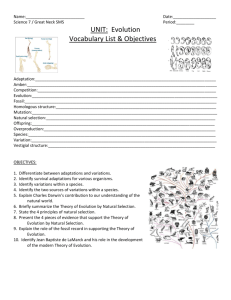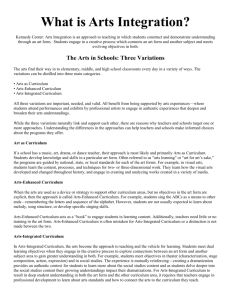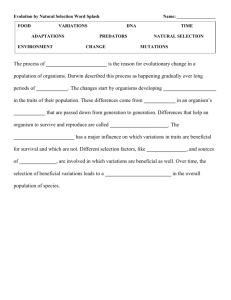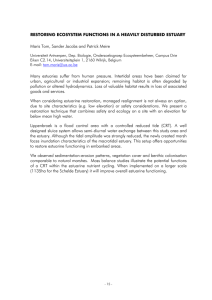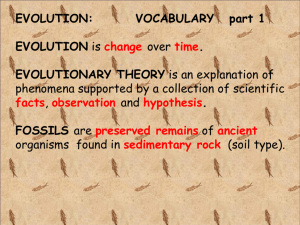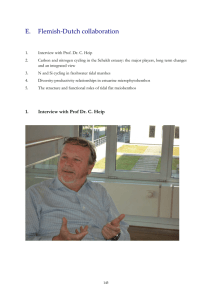Document 12239448
advertisement
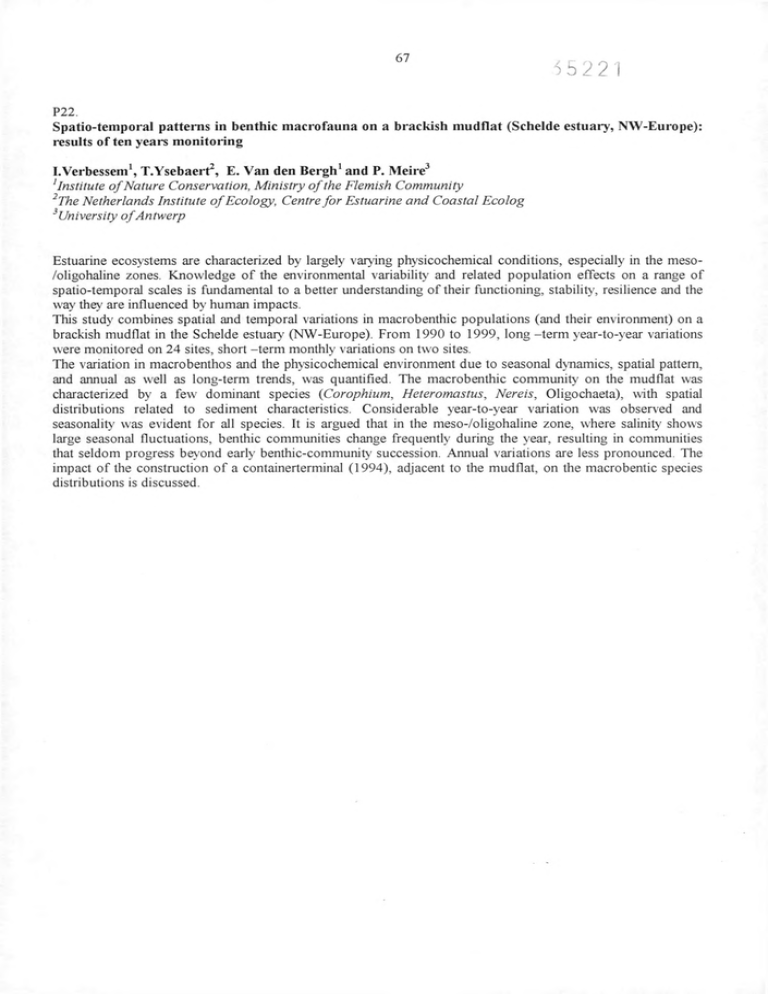
Spatio-tem poral patterns in benthic m acrofauna on a brackish m udflat (Schelde estuary, NW -Europe): results o f ten years m onitoring I.Verbessern1, T.Ysebaert2, E. Van den B ergh1 and P. M eire3 ‘institute o f N ature Conservation, M inistry o f the Flemish C ommunity 2The Netherlands Institute o f Ecology, Centre fo r Estuarine a n d C oastal E colog 3University o f Antw erp Estuarine ecosystems are characterized by largely varying physicochemical conditions, especially in the meso/oligohaline zones. Knowledge o f the environmental variability and related population effects on a range o f spatio-temporal scales is fundamental to a better understanding o f their functioning, stability, resilience and the way the}' are influenced by hum an impacts. This study combines spatial and temporal variations in macrobenthic populations (and their environment) on a brackish m udflat in the Schelde estuary (NW -Europe). From 1990 to 1999, long -te rm year-to-year variations were monitored on 24 sites, short -te rm monthly variations on two sites. The variation in m acrobenthos and the physicochemical environment due to seasonal dynamics, spatial pattern, and annual as well as long-term trends, was quantified. The macrobenthic com m unity on the m udflat was characterized by a few dominant species (C orophium , H eteromastus, Nereis, Oligochaeta), with spatial distributions related to sediment characteristics. Considerable year-to-year variation was observed and seasonality was evident for all species. It is argued that in the meso-/oligohaline zone, where salinity shows large seasonal fluctuations, benthic communities change frequently during the year, resulting in communities that seldom progress beyond early benthic-community succession. Annual variations are less pronounced. The impact o f the construction o f a Containerterminal (1994), adjacent to the m udflat, on the m acrobentic species distributions is discussed.

